Big bold ideas create transformational change for your nonprofit, your community, and your fundraising
Nonprofits that put forward a big and bold vision attract aspirational donors looking to change the world.
Whether it is in your own backyard or around the globe, a carefully executed process of visionary planning and ambitious priority and goal setting cannot be bound by the constraints of current convention nor by perceived restrictions.
The process must consider and set the stage for transformational change, not only for the organization, but also for the people and communities it serves. Taking bold ideas and sharing them in inspiring ways will give prospective donors the excitement and confidence to become your organization’s philanthropic partners.
Big Ideas Inspire and Excite
A compelling vision, bold fundraising priorities and aspirational goals generate more than philanthropic success. They motivate and coalesce leadership, staff and, ideally, the community. They inspire stakeholders, prospects and donors. And they elevate the profile and reputation of the institution while declaring to the community that the institution is on the move and ready to positively impact the future.
It’s also important that these big, bold ideas:
- Align with an organization’s mission, values and strategic plan
- Are aspirational and realistic
- Balance long-term priorities with immediate needs
Formulate a Compelling Vision to Inspire Donors
Fundraising priorities present donors an opportunity to be a part of an exciting and motivating vision, according to Peter Cowhey, immediate past dean of the School of Global Policy and Strategy at UC San Diego. “Your fundraising campaign needs to build a vision with those who are going to write the big checks,” he says. To do that, think more about the end than the means to reach that end. As an example, Cowhey points to a common priority for many universities: a new or renovated building. “You don’t need to articulate renovations as distinct projects,” he says. “They are a means to an end.”
“Raising money for a building can be difficult. But raising money for people, programs and collaborative and innovative environments is much easier and more visionary. When a tech company builds a building, they worry about the HVAC, security, etc., but they sell the innovation, collaboration and stimulation that comes from a well-designed space.”
It’s that kind of visionary thinking that excites and motivates donors looking to make sizeable investments to realize positive changes to current social issues. Such thinking also inspires, motivates and engages staff and institutional leadership. This was the case for San José State University (SJSU). “The concept of big ideas creates a lot of internal excitement,” says Sabra Diridon, executive director of development. “Our deans, directors and other leadership got really excited about sharing big ideas. In doing so, they found great synergy with each other’s ideas, which inspired them to collaborate and build even bigger concepts and strategies for change.”
Prioritize Big Ideas to Achieve Audacious Success
Financial investments are needed to realize big ideas and achieve positive change, so choosing the right fundraising priorities is critical for any fundraising campaign. And while it may seem overwhelming, The Phoenix Philanthropy Group has established a step-by-step process to help organizations successfully navigate this challenging opportunity.
There are many factors to consider when determining fundraising campaign priorities. First and foremost, it’s important to choose initiatives for which private support will make a huge transformation, relates Peter Smits, a senior consultant with The Phoenix Philanthropy Group. The next step is to engage the leadership of the entire organization in the process.
Diridon agrees. Engaging leadership with a blank slate and no preconceived priorities or limitations was beneficial to the process. In the case of SJSU, the president’s ideas were not shared or considered until after the more ground-up approach was close to completion. “We began the priority-setting process by meeting with our leadership team to think about what their big ideas could be,” she said. “That preparation process was vitally important to us since we had not engaged in a priority-setting process in earlier, and less successful, stages of the campaign.
“This created the opportunity to be inclusive, which ensured larger buy-in from our campus, and it also helped us identify those big ideas that we were uniquely positioned to have an impact on and build on.”
The Priority Setting Process
A deliberate step-by-step process can be valuable when determining which “big ideas” and initiatives can “meet the muster” to be a campaign priority.
Step 1: Evaluate the priorities
This is where the “rubber meets the road” when it comes to establishing bold campaign priorities. One of the most effective ways to evaluate priorities is to rate them based on criteria such as relevancy and urgency to the community and key stakeholders, impact on quality of life and social issues, potential to be funded within a given timeframe and ability to be fully articulated in a compelling way.
Step 2: Develop the narrative.
At its very base, the narrative should answer these questions: “Why us?”, “why now?”, “why us?, why would a donor care?” – and “how can I help?”.
When developing a more detailed narrative around priorities, include an overview; statement of community need and how it will be distinctly addressed; outcomes to be achieved; anticipated timeline; sustainability and, if appropriate, scalability over time; and finally, the motivation for a donor to invest in this initiative and the impact that investment will have. This narrative can be condensed into an elevator speech or expanded into a case for support.
Step 3: Determine the budget.
Don’t be constrained by previous budgeting restrictions. A bottom-up budgeting worksheet can be a valuable tool for estimating the budget needed to realize campaign priorities.
Step 4: Identify prospective donors and volunteers.
It’s important early in the process to identify prospective donors and volunteers who will lead and support the priority. Having the right lead donors and volunteers on board coalesces, inspires and provides confidence for others to join and invest in the effort.
Diridon is a true believer in the priority planning process. “The process can strengthen the culture of philanthropy internally and externally,” she says. “It reminds us of our mission, how philanthropy helps us accomplish it and how important our partnership with our donors is to our community. Every day we see how the amazing work of our faculty and staff is brought to life by donors who believe in our dream.”
Develop a Compelling Case Donors Can’t Resist
When creating a compelling case to support bold fundraising priorities, it’s important to put the donor first, says Sara Stern, executive vice president of philanthropic marketing at Lipman Hearne. “Donors give as an expression of personal values. They are giving through your institution to positively impact a cause they value.”
Therefore, the campaign messaging or story should be about what they can accomplish by donating to or investing in an organization’s campaign. “It’s not about what the organization needs; it’s about how the donor will impact the cause they believe in by giving to your campaign,” she says.
Keep these factors in mind when developing a compelling campaign message:
- Create donor-centric messages. Package priorities with an outsider’s perspective in mind.
- It’s not about the organization’s need; it’s about the benefit to the donor who gives and the community who receives.
- Everybody’s asking. Differentiate the ask by ensuring the donor is investing in a cause they care about.
- People don’t give to a campaign. They give through an organization to benefit a cause they care about.
Giving makes people happier and creates a sense of community and pride. A compelling case positioned from the donor’s perspective will inspire them to give generously.
Key Takeaways
Organizations should:
- Align fundraising priorities and goals with the organization’s vision, mission and strategic plan – and the donors’ values and interests.
- Extend visioning, priority planning and goal setting across the organization.
- Think big, think bold, beyond current convention or budget.
- Do not cut the process short. Be deliberate from start to finish.
- Position priorities and inspire prospective donors with a compelling case for support.
- Move donors to investors and partners to reach big, bold fundraising goals.
Richard Tollefson is founder and president of The Phoenix Philanthropy Group, an Arizona-based international consulting firm serving nonprofit organizations as well as institutional and individual philanthropists.
